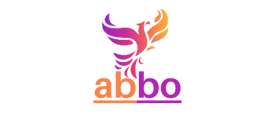Education has always been a cornerstone of human progress, and as we become more interconnected globally, the way we approach learning must also evolve to keep up with the demands of the 21st century. A global perspective on education is essential not just for fostering academic growth but also for bridging cultural gaps and enhancing learning opportunities worldwide. As we look at education from a global standpoint, we must consider the challenges and opportunities that arise from different cultures, economies, and technological advancements. This article explores how a global approach to education can create a more inclusive and equitable world for learners everywhere.
Bridging Cultural Gaps in Education
One of the most significant benefits of a global approach to education is the opportunity to bridge cultural gaps. In today’s world, where migration, communication, and international relations are at the forefront, students from various cultural backgrounds often interact in classrooms. Educational systems that embrace diversity help learners understand and appreciate different worldviews, traditions, and histories, creating more inclusive environments that celebrate global cultures.
Cultural exchange programs, virtual classroom collaborations, and multinational study opportunities have shown to broaden students’ perspectives, breaking down prejudices and fostering empathy. By exposing students to diverse cultures, global education systems help eliminate stereotypes, nurture respect, and instill a sense of shared humanity. Moreover, students become more adaptable to different cultural contexts, which is an essential skill in an increasingly globalized job market.
Enhancing Learning Opportunities Worldwide
While the benefits of bridging cultural gaps are clear, a global perspective on education also helps enhance learning opportunities worldwide. In many regions, access to quality education is limited due to financial, geographic, or political barriers. However, advancements in technology are rapidly changing this reality. Online learning platforms, massive open online courses (MOOCs), and educational tools powered by artificial intelligence (AI) are making education accessible to millions, regardless of their location.
Take the example of countries in sub-Saharan Africa, where educational resources are often scarce. With the advent of e-learning platforms, students now have access to high-quality courses, textbooks, and instructors from across the globe. This democratization of education opens up opportunities for students who may have never had the chance to attend a physical classroom or learn from experts in their chosen fields. Furthermore, the ability to pursue online degrees from international universities eliminates the need for expensive travel, making education more affordable.
Technology is not the only solution. In many countries, governments and organizations are working together to expand access to education through initiatives like mobile schools, satellite-based learning, and low-cost educational materials. For instance, UNESCO’s Education for Sustainable Development (ESD) initiative focuses on integrating sustainability into education systems worldwide, ensuring that education systems are not only accessible but also future-focused.
Challenges in Global Education Systems
Despite these advancements, challenges remain in creating equitable and effective education systems globally. Disparities in educational quality persist due to differences in funding, infrastructure, teacher quality, and policy frameworks across countries. While some nations invest heavily in education, others struggle with inadequate resources and outdated curricula. This creates a divide where children in wealthy nations have access to cutting-edge education, while those in less developed regions face significant obstacles.
Additionally, cultural differences can sometimes be a double-edged sword. While cultural diversity enhances education, it can also create tension in educational settings if not managed properly. Misunderstandings and communication barriers can arise, leading to a sense of alienation among students from minority backgrounds.
The Role of Global Organizations
Organizations such as UNESCO, UNICEF, and the World Bank play a vital role in addressing these challenges. They collaborate with governments to develop policies that focus on universal access to education, improve educational standards, and encourage the exchange of best practices. For example, UNESCO’s “Global Education Monitoring Report” monitors progress towards the United Nations’ Sustainable Development Goal 4 (SDG 4), which aims to ensure inclusive, equitable, and quality education for all by 2030.
In addition, international partnerships between universities, non-profits, and tech companies are fostering innovation in education. Programs such as the United Nations’ “Global Education First Initiative” and the “Global Partnership for Education” aim to ensure that every child has access to quality education, no matter where they live.
7 Frequently Asked Questions (FAQs)
- What is a global perspective on education? A global perspective on education involves recognizing and embracing the cultural, social, and technological differences in education systems worldwide, aiming to create inclusive and equitable learning opportunities.
- How does cultural diversity enhance education? Cultural diversity promotes the exchange of ideas, fosters empathy, breaks down stereotypes, and encourages respect for different worldviews, which enriches the learning experience.
- What are the barriers to accessing education worldwide? Barriers include geographic isolation, financial constraints, political instability, lack of infrastructure, and unequal distribution of educational resources.
- How is technology changing global education? Technology is enabling online learning platforms, MOOCs, and AI-driven education tools that make learning more accessible and affordable to people around the world.
- What role do global organizations play in education? Global organizations like UNESCO and UNICEF work to promote universal access to education, improve standards, and address educational disparities.
- Can online education replace traditional schooling? While online education offers great flexibility and accessibility, it may not completely replace traditional schooling due to the need for face-to-face interactions, social development, and access to hands-on learning experiences.
- How can we ensure quality education for all? Ensuring quality education requires increasing investments in education, updating curricula, training teachers, and removing barriers like poverty and gender inequality.
Conclusion
A global perspective on education is more critical than ever before. It allows us to bridge cultural gaps, enhance learning opportunities, and promote a more inclusive, understanding, and connected world. By embracing diversity and leveraging technology, we can break down the barriers that prevent children and adults alike from accessing quality education, regardless of their location or background. While challenges persist, global cooperation and innovative approaches to education offer hope for a brighter, more equitable future for all learners.
Key Takeaways:
- A global perspective on education bridges cultural gaps and promotes understanding among diverse populations.
- Technology has made education more accessible, particularly in underprivileged regions.
- Global organizations play a significant role in creating inclusive and equitable education systems.
- Challenges such as funding disparities and cultural misunderstandings persist but can be overcome through cooperation and innovation.

